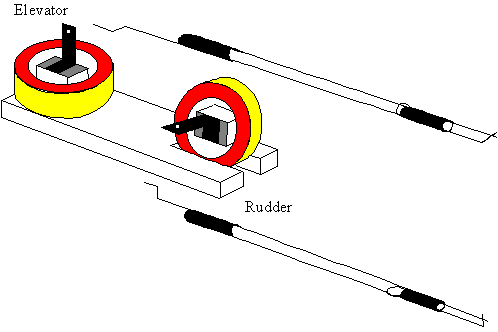
mm-inst.htm; created: 09 DEC 1999

MicroMag Application: Installation
The electrical
hook-up is rather straightforward. To realize the lowest weight
no connectors are used. The wiring shall be soldered. Use an iron
with a very fine point. Keep this point clean and use the
supplied fine soldering wire to get the best results. All holes
are throughplated realizing both a contact between the board
sides as well as a more rugged soldering piont. It is not really
nessecairy to lead the wires through the hole.
The wires from the servo's are litze wires consisting of five
individually isolated thin wires. Only one of these five wires is
actually conducting the current, the others are for strength.
When the litze wires are to be shortened, hold the end of the
wire in a blob of melting solder on the tip of the soldering iron
and regularly add some resin cored tin until all the enamel of
the litze end is removed.
Keep the antenna, keep 15 mm or more from the other leads

Keep the
motor wires as short as possible. This is a general rule in
electric flight and for µMag as well.
When wires are longer than about 15 mm these should be twisted.
Use a
polarised plug for the battery.
Reversal of the + and – can cause immediate destruction of
the controller.
The servo’s mounted on small balsa board with their coils oriented under 90°. The mounting distance influencs the neutralizing force. Normally the servo's are supplied ready mounted on the balsa board.

Don‘t use CA to glue the servo tray in the model otherwise the servo‘s could get stuck. It is adviced to use Epoxy for safety. CA glued servo's are no reason for warrenty claims.
When accidentally
some CA came in to contact with the bearings there is one way to
repair this, but you need to be patient. You need acetone
thinner, a small aquarel brush and an airgun (an airbottle for
airbrush with a nozzle is fine).
Put a drop of acetone on the bearings, whiggle the magnet and
blow it dry. Repeat many, many times untill the bearing is free
again.
Information on Linkages you will find in that chapter.
Copyright © 1999
Ruijsink Dynamic Engineering. All trademarks shown are trademarks
of their respective owners. All rights reserved.
http://www.ruijsink.nl, designed by Rick Ruijsink